- 14 Days
- 5545m. Kala Patthar
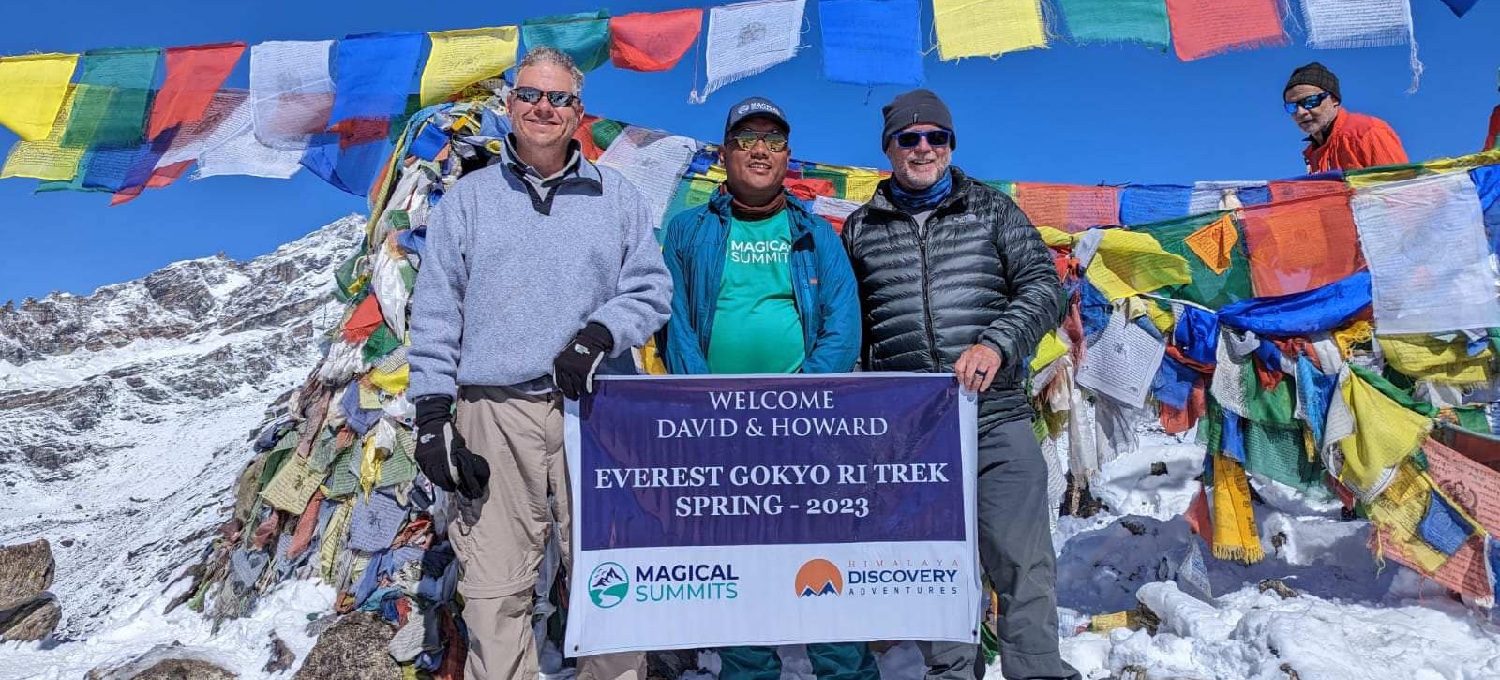
Gokyo and Renjo La Pass Trek is the unique and most rewarding trekking trips in Nepal. It combines the trekkers’ journey to Gokyo Valley and a hike through Renjo La Pass at 5360 meters above sea level. And undoubtedly, it offers a once-in-a-lifetime experience that is adventurous and thrilling.
From the stunning views of the Himalayas, including peaks like Mount Everest, Ama Dablam, Cho Oyu, Nuptse, Lhotse, and Island Peak, to the mystic frozen lakes of Gokyo Valley, trekkers will find this trek lifetime memorable. Besides, the cultural background of the Everest Region is so rich that you can experience a diverse lifestyle, religion, culture, and languages.
Similarly, the warm hospitality of the Sherpa people will call you to this region for the second time.
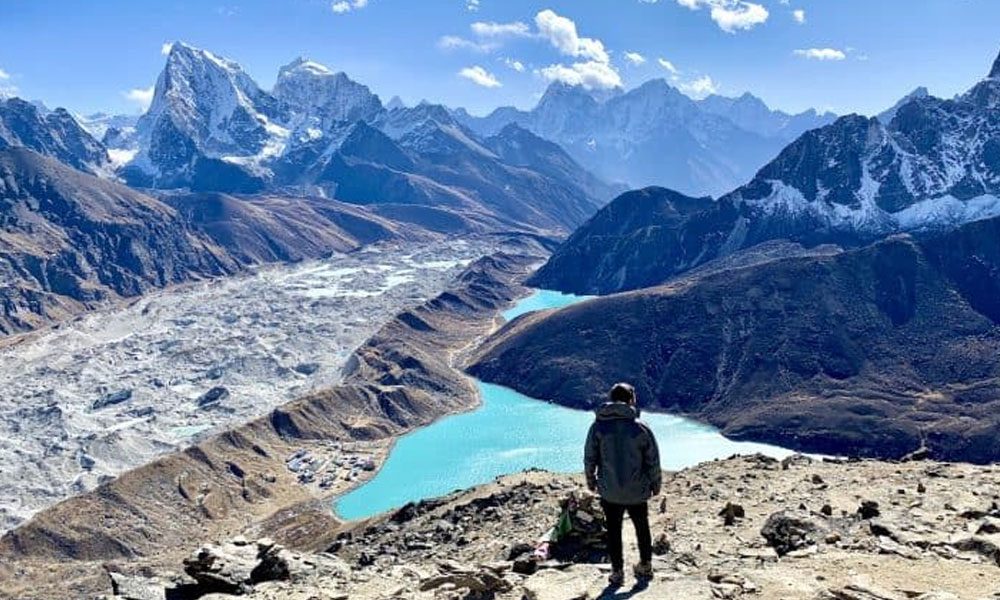
Our trek to Gokyo and Renjo La Pass begins from Lukla, from where we will move ahead to the place called Phakding and then head toward Namche Bazaar, the gate to Mount Everest.
The scenery of the Himalayas will always welcome with its pristine beauty while we hike through the trails. We will continue our hike to Dhole Village, a traditional Sherpa Village with Buddhist culture and tradition. Similarly, before heading to Gokyo Valley, we will make our stop at Machhermo Village. When we move ahead to Gokyo, we will explore five frozen lakes along with the nearest peak, Gokyo Ri (5360 meters).
From Gokyo, we will begin our journey to Renjo La Pass (5360 Meters), one of the three high altitude passes in Everest Region. From there, we will view the stunning scenery of valleys and green lush forests to the downhill. From there, we will proceed our journey to Thame and Namche Bazaar again. Later, we will conclude our hike in Lukla, from where we will fly back to Kathmandu.
Overall, Gokyo and Renjo La Pass trek offers a thrilling experiences with the beauty of the Himalayas, ancient monasteries, traditional villages, diverse people and culture, and green lush forest. Here are some things that you should consider and know before embarking on this beautiful trek. See below!
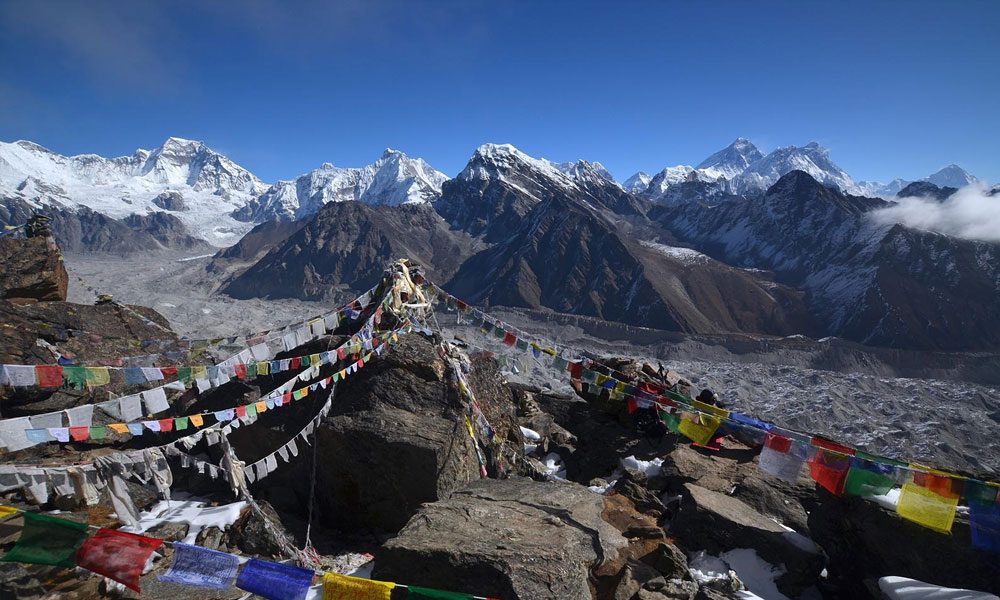
Generally, Autumn and Spring are the peak season of Gokyo and Renjo La Pass Trek. The Everest Region is freezing almost every month of the year, but during this season, trekkers can experience minimal rainfall and snowfall, making it pleasant to travel around. Here is detailed information on how is the weather like in Autumn and Spring:
Autumn comes with a moderate temperature and a pleasant environment. The temperature around Everest Region during this season is 7 to 10 Degrees Celsius during the day. So it is not too hot or cold that makes our body challenging to adapt to the climate.
Similarly, the Autumn season features a dry environment, making navigation easy. Due to less rainfall, the trails do not get wet and slippery. Besides, the clean environment with a clear sky and fewer clouds are the best time to take your sightseeing activities to the next level.
On top of that, Autumn is a season of festivals in Nepal. While traveling to Gokyo and Renjo La Pass, you can experience the celebration of major festivals like Dashain and Tihar. It is also a great chance to be involved in cross-cultural activities, making your trek enjoyable.
Spring is one of the exciting seasons in Nepal as it brings colors to the environment. During this time, the trees change their leaves, and flowers in the jungle go into full bloom. This creates an eye-pleasing scenery around Gokyo and Renjo La Pass. The white rhododendron makes the full forest white while the colors of other wildflowers blend to make it look like a rainbow.
Besides, Spring features a mild temperature of around 5 to 10 Degrees Celsius around the Everest Region. In addition, there is less chance of rainfall and snowfall, which reduces the potential natural calamities which might create challenges while trekking.
The clean, dry environment with less air and rain precipitation makes our journey more enjoyable. And suppose you are up to the beautiful scenery around Everest Region. In that case, the Spring season is considered the best as it features fewer clouds and mist that might block the stunning views of the Himalayas, local villages, and full-bloomed forests.
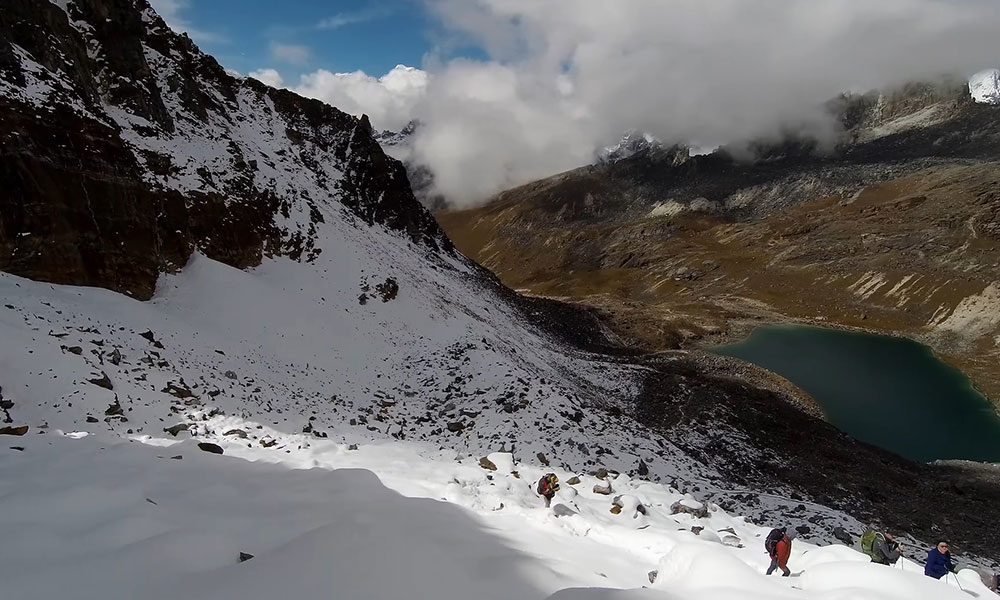
Besides the peak season, Off-Season Treks to Gokyo and Renjo La Pass are also very famous. Many trekkers embark on the off-season journey to this destination and still make the most of it. However, doing this is unsafe, and we recommend not taking any off-season treks so far.
Off-season treks to Gokyo and Renjo La Pass need strict preparation since, during this time, the weather can be very unpredictable, and the region is prone to natural hazards. In monsoons, there is a chance of landslides, rockfall, and flooding in the streams due to heavy rainfall.
Similarly, the trails get slippery, making trekkers hard to traverse. Similarly, the heavy snowfall in the winter might bring avalanches that can cost lives and properties. Besides, adapting to this region during this season is very challenging. The temperature can drop to -10 Degrees Celsius, and the night times are even more harsh.
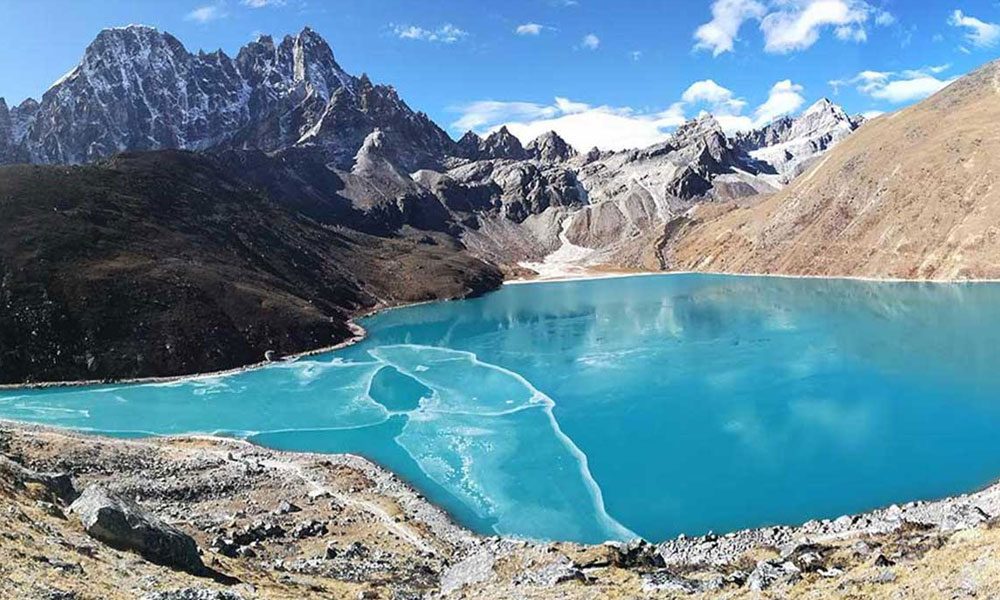
Anyone with prior trekking experience can do this trek. But it does not mean that it does not need any preparations. Trekkers with extensive backgrounds also need a strict preparation and planning before embarking on Gokyo and Renjo La Pass Trek.
As we all know, this trek takes you from the riskiest airport in the world, Lukla Airport, to the valley of frozen lakes, Gokyo; plans should be made accordingly. The trails are rugged and rigged, so you must be physically fit to deal with these trails.
Similarly, the weather condition is unpredictable, so trekkers must be mindful of it before they start the trek. Moreover, the temperature around the Everest Region is harsh, which can even lead to altitude sickness; trekkers must be able to adapt to these requirements during their journey. You can move forward with your trek if your physical conditions can withstand these barriers around Gokyo and Renjo La Pass.
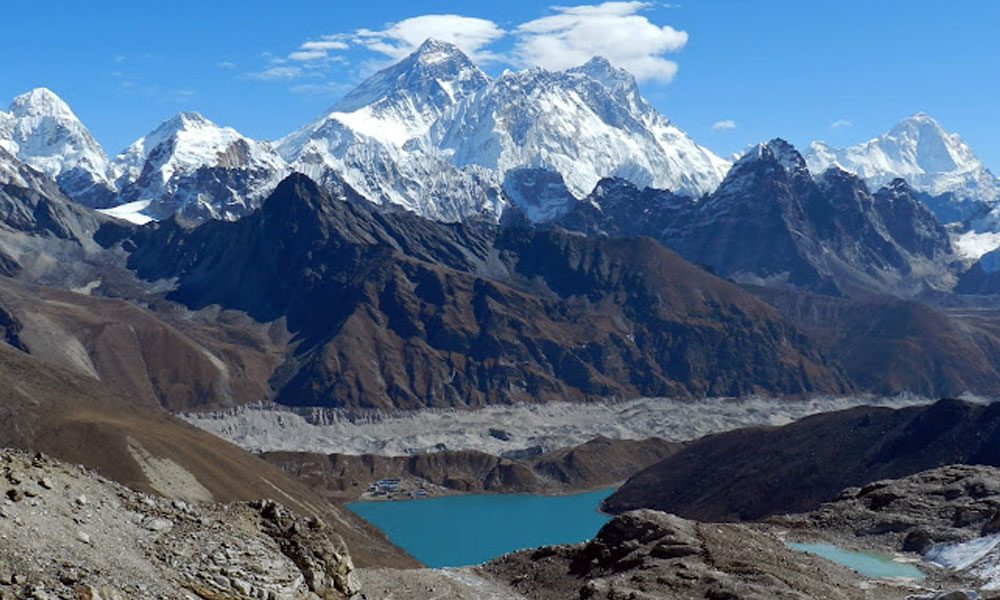
To attempt this trek, you need to be prepared physically and mentally. Since it is a multi-day trekking package, which takes you through the remote locations of the Everest Region, it is considered a moderately challenging journey. So preparation is a must. Explore what kinds of preparation and planning you need for Gokyo and Renjo La Pass Trek!
You need to obtain three permits for this trek: Sagarmatha National Park Entry Permit and Pasang Lhamu Municipality Entry Permit. These licenses can be purchased from Nepal Tourism Board in Kathmandu. The Monjo Checkpost also provides you this service.
Gaurishankar Conservation Area Entry Permit is an optional permit, which should be purchased if trekkers are willing to hike from Jiri.
Trekkers have to be equipped with several hiking gear and equipments before embarking on Gokyo and Renjo La Pass Trek. Items like backpacks, hiking boots, trekking poles, sleeping bags, sleeping pads, safety kit, sunscreens, warm clothes, and waterproof/windproof jackets are crucial for this trek.
Trekkers need to have strong physical fitness to carry on this multi-day trek. The trail is uphill, steep, and sloppy, so you need be physically prepared. It requires 6 to 7 hours of continuous walk for around 10 days, so you know how you need to prepare. Trekkers need to workout on altitude trainings, cardio, lung trainings, and others.
At the same time, mental preparation is also very important. Since this is a moderately challenging trekking package, trekkers might get exhausted which can sometimes give a sense of hopelessness. But what we suggest to them is to see on the positive side and prepare for the worst. And do not hesitate to seek help from your guides and porters and push yourself to continue the trek. But remember to know your physical ability: if you start getting symptoms of altitude sickness, lower down your altitude and seek medical help.
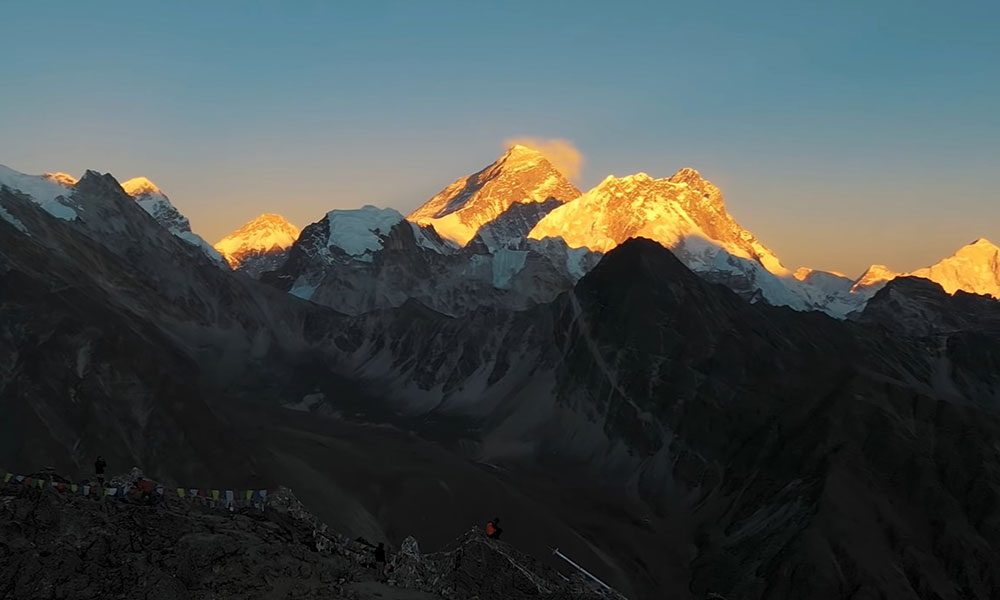
Previously, solo trek to Gokyo and Renjo La Pass Trek was allowed, but it has been banned by Nepal Government now. This trek and all the trekking destinations are closed for solo trekking in Nepal. Nepal Government and Nepal Tourism signed a law to close all solo trekking packages to ensure trekkers’ safety during travel.
As there have been several missing cases and trekker injuries on the trek, it was one of the burning topics in the Nepalese Tourism Industry. The law was implemented on April 1, 2023, but it has gained positive and negative criticism worldwide.
We recommend hiring a professional guide to embark on this Gokyo and Renjo La Pass Trek since the destination is in a remote location in Solukhumbu District. The trail is rugged, and it consists of rocky terrains which are sloppy and slippery, which are prone to challenging navigation and access. Similarly, some of our destinations, like Renjo La Pass, Gokyo Ri, and Lungden Village, sit in high altitudes, where trekkers can easily suffer from altitude sickness. To ensure your safety from all these challenges, hiring a guide is the best option.
Professional guides can lead you through the region’s easiest routes and dos and don’ts. Similarly, they have extensive knowledge about the background of the Everest Region. It makes trekkers easy to dwell in the local community, its people, culture, and lifestyle. Similarly, they can help you communicate with the local Sherpa people, which makes it easy to adjust to the community.
The cost of Gokyo and Renjo La Pass Trek depends on the time of year you are traveling, days of itinerary, the activities you involve in, and the trekking agency you choose. But if you see from the surface, this trek’s average cost will be over $1300 per person. Since it is a multi-day trekking package that blends two major destinations within Everest Region, the cost comes to be more than the standard package. Here is the breakdown of your cost during this beautiful trek:
| Breakfast Cost | $8-$12 Per Person |
| Lunch Cost | $10-$15 Per Person |
| Dinner Cost | $10-$15 Per Person |
| Accommodation (Tea House/Lodges) | $10 Per Person |
Besides, trekkers also have to pay for permits to enter the Everest Region. Here is the breakdown of permit cost required for this trek:
| Sagarmatha N.P. Entry Permit | 3000 NPR |
| Khumbu Pasang Lhamu Rural Municipality Entrance Permit | 2000 NPR |
| Gaurishankar Conservation Area Permit | 3000 NPR |
There are three types of accommodation trekkers go through during Gokyo and Renjo La Pass Trek. They are
During the initial phase of our trek, we will accommodate at a hotel in Kathmandu. These hotels have amenities like attached bathrooms, hot showers, 24/7 electricity, and internet services. Also, they are safe to stay and offer a wide range of services.
You also can find hotels and guest rooms during your trek in Namche Bazaar. Namche features various modern hotels that offer you lavish services and amenities. Staying at a hotel can cost you anywhere from $8 to $20, depending on the luxury. If you look forward to staying at a luxury hotel, it can cost you more than $50. However, the choice of staying is all yours.
Tea Houses are the most common form of accommodation trekkers find during the trek. Tea houses are at almost every Gokyo and Renjo La Pass Trek stop. You can find these logistics services in Phakding, Namche, Thame, Machhermo, and other places.
These tea houses are cheaper than staying at a hotel, which is around $8 per person. You must share a dormitory with shared rooms and bathrooms at tea houses.
Location: Lukla |Phakding
Phakding Altitude: 2610 Meters
Our first day of Gokyo and Renjo La Pass Trek starts in Kathmandu, the capital city of Nepal. We will first reach Tribhuvan International Airport and onboard a flight to Lukla, one of the most dangerous airports in the world. After 45 minutes, we will reach Lukla to rest and prepare for the next hiking part.
After we finish our preparation, we begin our beautiful trek to Phakding, which takes around 3 to 4 hours. Phakding is a beautiful Sherpa Village rich in Buddhist culture located 2610 meters above sea level. The trail to this settlement is rugged and uphill, so sturdy hiking boots and trekking poles are recommended.
First, we will reach Chheplung Village (2660 Meters) and proceed to Thado Koshigaon. From there, we will reach Nurning and Chhermading before finally getting to Phakding.
Location: Namche Bazaar
Today, our destination is Namche Bazaar, the Gate to Mount Everest. It is a beautiful town with diverse culture and lifestyle, where we can experience the blended lifestyle of both Nepali and Western amenities. Standing 3445 meters above sea level, Namche Bazaar offers stunning views of Mount Everest, Ama Dablam, Island Peak, Nuptse, and other famous peaks.
We will leave Phadking early in the morning and reach Bengkar Village first. After that, we will take the path from the right side of the settlement and continue our journey to Chhamuwa and Monjo. At Monjo Village, we have to go through some legal formalities, where our passports and other essential documents will be checked. We can also buy the permits for Everest Region at Monjo Check Post.
From Monjo, we will traverse through the settlements at Jarsalle and Larja Dobhan before reaching Namche Bazaar. Tonight we will stay at a guest house.
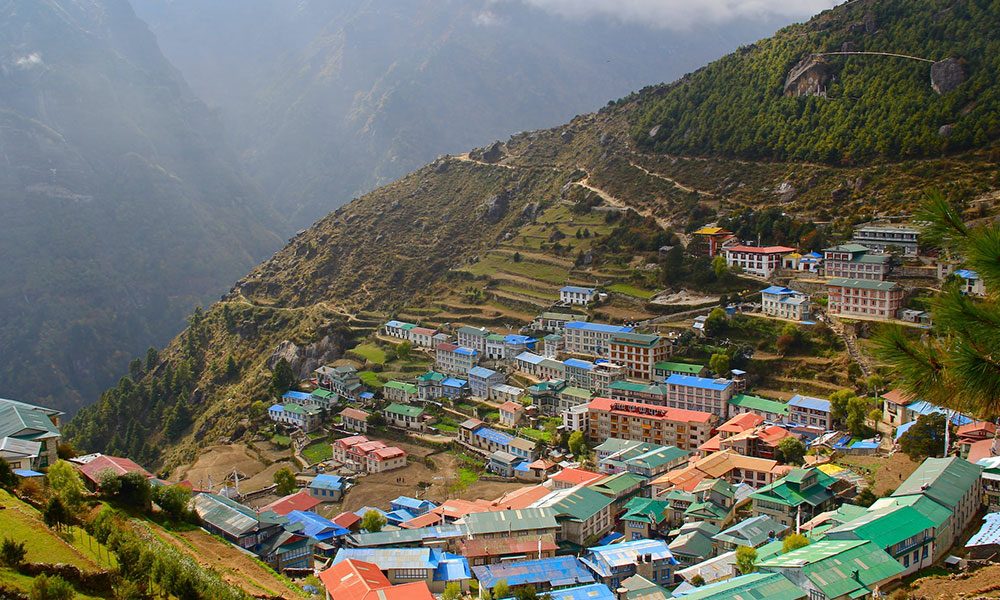 Location: Namche Bazaar
Location: Namche Bazaar
As we have already climbed up to 3445 meters above sea level, we must acclimate to adjust our bodies to the altitude. Acclimatization helps our body to adapt with the lower oxygen level in the surrounding. Similarly it helps body retain energy, helping to fight against Altitude Sickness and other related health hazards. Trekkers are recommended to stay hydrated, eat healthy and nutritious food, and get enough rest & sleep.
Here’s how you can acclimatize at Namche:
We can explore the nearby places around Namche Bazaar. Hotel Everest View at 13000 feet is one of the attractive locations where we can visit and get 360 views of the Himalayas in the north. Alternatively, we can explore Thame Village, the home of the famous Tenzing Norgay.
Location: Dole
On the fourth day of our Gokyo and Renjo La Pass Trek, we will start our journey from Namche Bazaar. Our main motive will be to reach Dole Village at 4150 meters. Remember to prepare with the altitude-related aspects since this can be a problem at high altitudes.
First, we will reach Phunke Tenga (3250 Meters), from where we will head straight ahead through the uphill trail and reach Phortse Thanga. There is an ancient Buddhist Monastery where we can visit and explore insights into the practice of Buddhism. The large chortens, prayer flags, prayer wheels, and mani walls are some of the distinctive features of this monastery.
From the monastery, we will head towards the Phortse. Afterward, we elevate our altitude with the perfect sight of the peaks like Mt. Everest, Cho Oyu, and Ama Dablam and reach Dole Village.
Location: Machhermo
Reaching Machhermo from Dhole Village takes around 5 to 6 hours of walking. As we leave Dhole early in the morning, we follow the uphill trail through Kele Village: the scenes of Dudh Koshi River down in the gorge offer a once-in-a-lifetime experience.
In between Kele to Machhermo, there are no settlements so we will reach Machhermo directly in the evening. We will traverse through the unbeaten trails of the remote and seasonal path to reach Machhermo, where we will stay at a tea house.
Location: Gokyo
Our first primary destination is Gokyo, which we will undertake on the sixth day of the Gokyo and Renjo La Pass Trek. We will begin our journey from the beautiful village of Machhermo. Our trail goes straight uphill to Phangga Village at 4480 Meters, stretching to Gokyo Valley.
As we approach Gokyo Valley, we will hike to its five lakes: Gokyo Cho (Dudh Pokhari), Thonak Cho, Gyazumpa Cho, Tanjung Cho, Ngozumpa Cho, and Longbanga Cho. These frozen lakes of Gokyo offer trekkers unforgettable memories and experiences. Hindu and Buddhist Devotees consider the five lakes of Gokyo holy. Every year during Janai Purnima, hundreds of Hindu Devotees trek to these lakes and bathe in the hope of erasing the sins of their lives.
After exploring all five lakes of Gokyo, we return to our camp in Gokyo. Remember to buckle up with your tent, sleeping bags, and warm clothes to stay warm and safe.
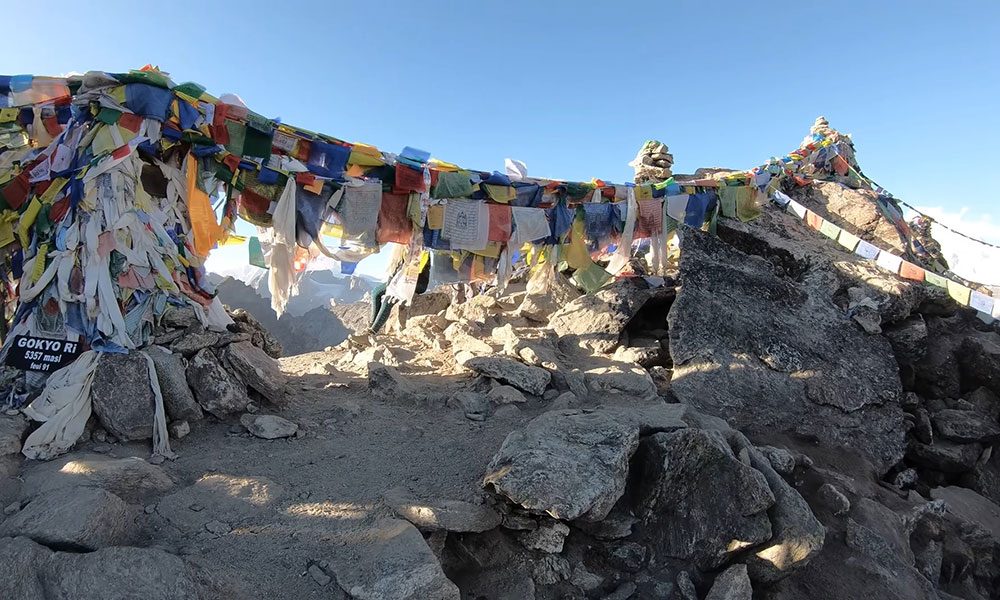
Location: Gokyo Ri
Gokyo Ri is a must-visit location in Gokyo Region. After a busy day of exploring Gokyo Lakes in the valley, we will go for another hike to Gokyo Ri on the seventh day. Gokyo Ri (5360 Meters) is a beautiful peak northwest of the Gokyo Valley. It is the nearest peak from our destination, which is also a perfect viewpoint to watch the sunrise, sunset, and the surrounding environment. From here, you can have the views of mystic mountain ranges, including Mt. Everest, Lhotse, Nuptse, and Ama Dablam.
After completing our hike to Gokyo Ri, we will return to Gokyo and stay overnight at a hotel.
Location: Renjo La Pass | Lungden
Lungden Altitude: 4350 Meters
After exploring Gokyo Valley and its attractions like Gokyo Lakes and Gokyo Ri, we will head towards one of the three Everest Passes, Renjo La Pass, at 5360 meters. It is a high altitude location, where altitude sickness is prone, so we must strictly prepare for this phase.
We will leave Gokyo Valley early in the morning and take a trail from the left side. Renjo La Pass is located on the hilltop, where sharp wind and cold temperatures hit harder. The trail goes from the Gokyo Tsho and meets directly at Renjo La Pass.
After Renjo La Pass, we will traverse several other frozen lakes, like Relama Tsho and Renjo Lake, before arriving at Lumde Village (4368 Meters), also known as Lungden.
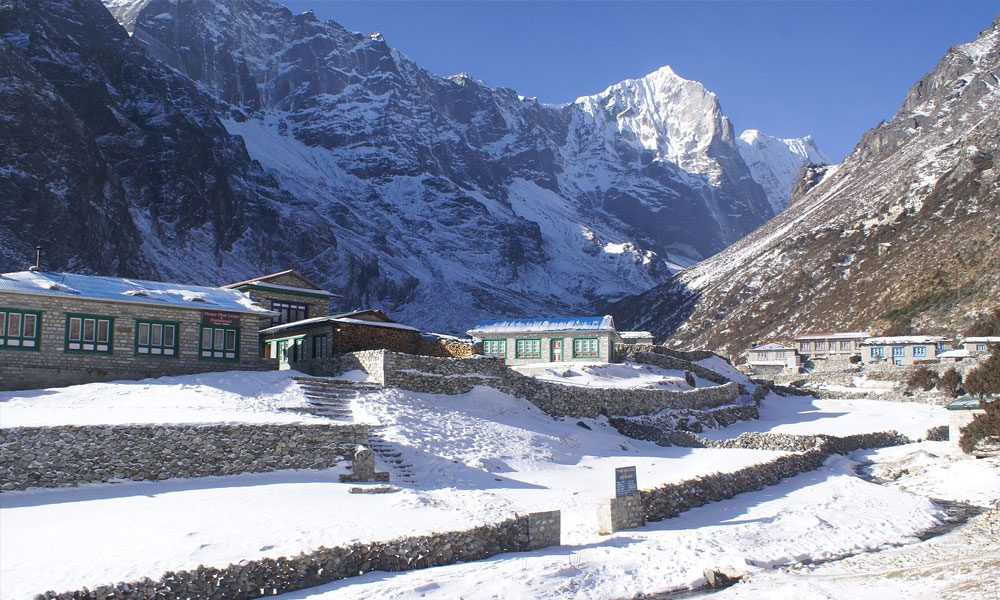
Location: Thame
As we reach Lungden, we will cherish the absolute beauty of the Himalayas and Tropical Tundra Climate. We will then start our journey from the Lungden Village. From there, we must traverse several traditional settlements, such as Marulung and Tarnga Village. Our journey continues: we will again head through the Hungmo and Hilajung Village before reaching Thame Village at 3850 Meters above sea level.
You can explore several Ancient Tibetan Monasteries in the region. One is Thame Monastery, in which we will explore and delve into traditional Buddhist culture. Tonight, we will stay at a tea house.
Location: Namche
On the tenth day of our Gokyo and Renjo La Pass Trek, we will return to Namche Bazaar at 3445 meters. The trail is long, so reaching our destination takes 7 to 8 hours. We will take the left path from Thame Village and head towards the nearest settlement at Samde. From there, we will traverse through Mende and Syangboche.
We will traverse the lush green forest of Rhododendrons and Fir trees during the hike. Our trek gets more exciting by the views of the Himalayas in the north. We will continue our trek to Namche Bazaar from Syangboche, where we will stay at a guest house.
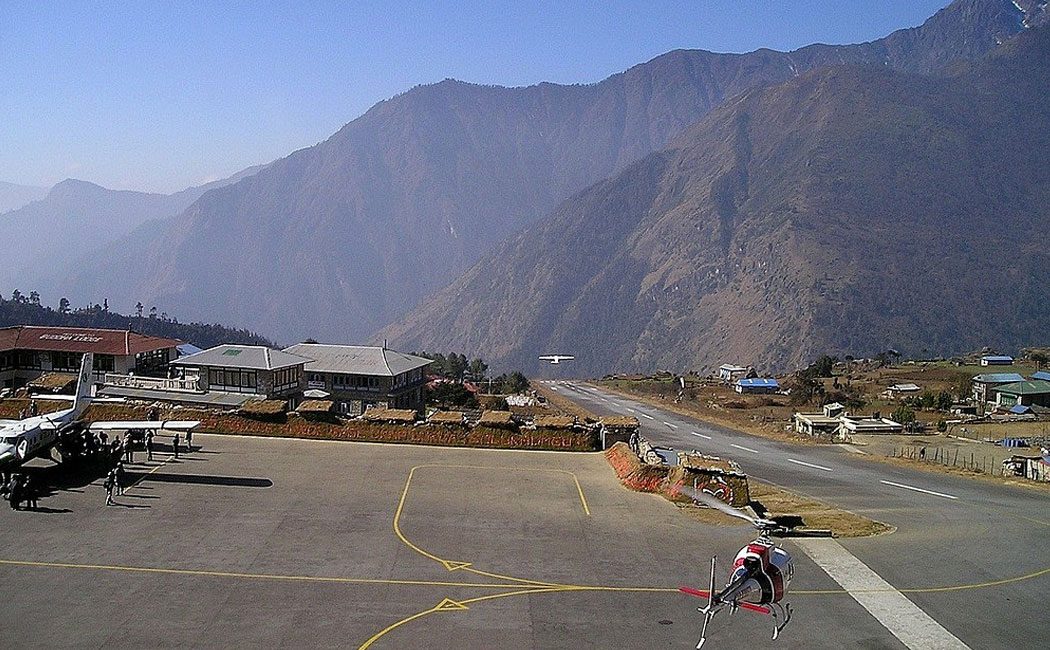
Location: Lukla
From Namche Bazaar, we will traverse the same trail we used to reach Namche before. We will first reach Larja Dobhan, Jorsalle, and Monjo Village. We proceed through the downhill route to get to Chhamuwa, Bengkar, and Phakding before reaching Lukla.
After reaching Lukla, we will rest and wrap up our hiking. We will stay at a tea house tonight.
Location: Kathmandu
This is the last day of our Gokyo and Renjo La Pass Trek. We will board a plane at Lukla Airport and head towards Kathmandu, which should take around 45 minutes. Upon arriving at Kathmandu, we will be escorted to our respective hotels, where we will rest before heading towards our home country the next day.
Yes, prior experience in trekking is necessary for this trek since it is a moderately challenging. It includes rocky terrains and steep landscapes and most importantly, trekkers will be exposed to high altitudes.

I was born in the mountains, and raised among some of the highest peaks on Earth. I am a proud native Sherpa. My home village of Sailung, Daduwa lies in the Ramechhap District in the Eastern part of Nepal, not far from the Everest region, the world’s highest mountain.
The specialist, I design your trip to the Himalayas; I have explored and guided the country and its regions many times, and I live here. My first-hand knowledge gives you the belief that no other travel company can match our expertise in helping you plan your trip to the Himalayas of Nepal, Bhutan & Tibet.
Since its start, Magical Summits has been super-powered by you, our community; when you “travel” it, we create it. We’re on a mission to make travel better with clean, award-winning adventures that are sustainable and conscious of the planet we share.
Thank you for being a part of our journey.
